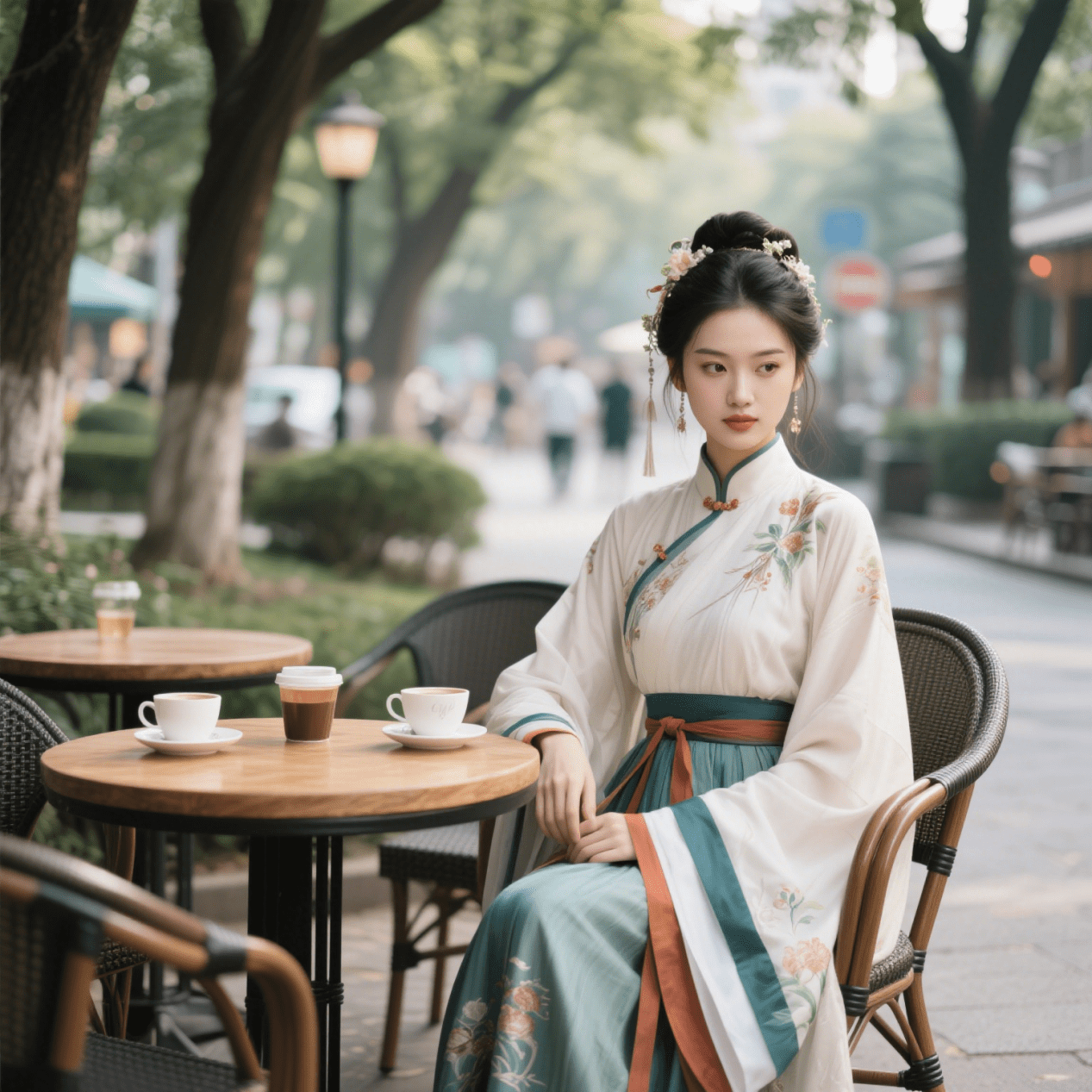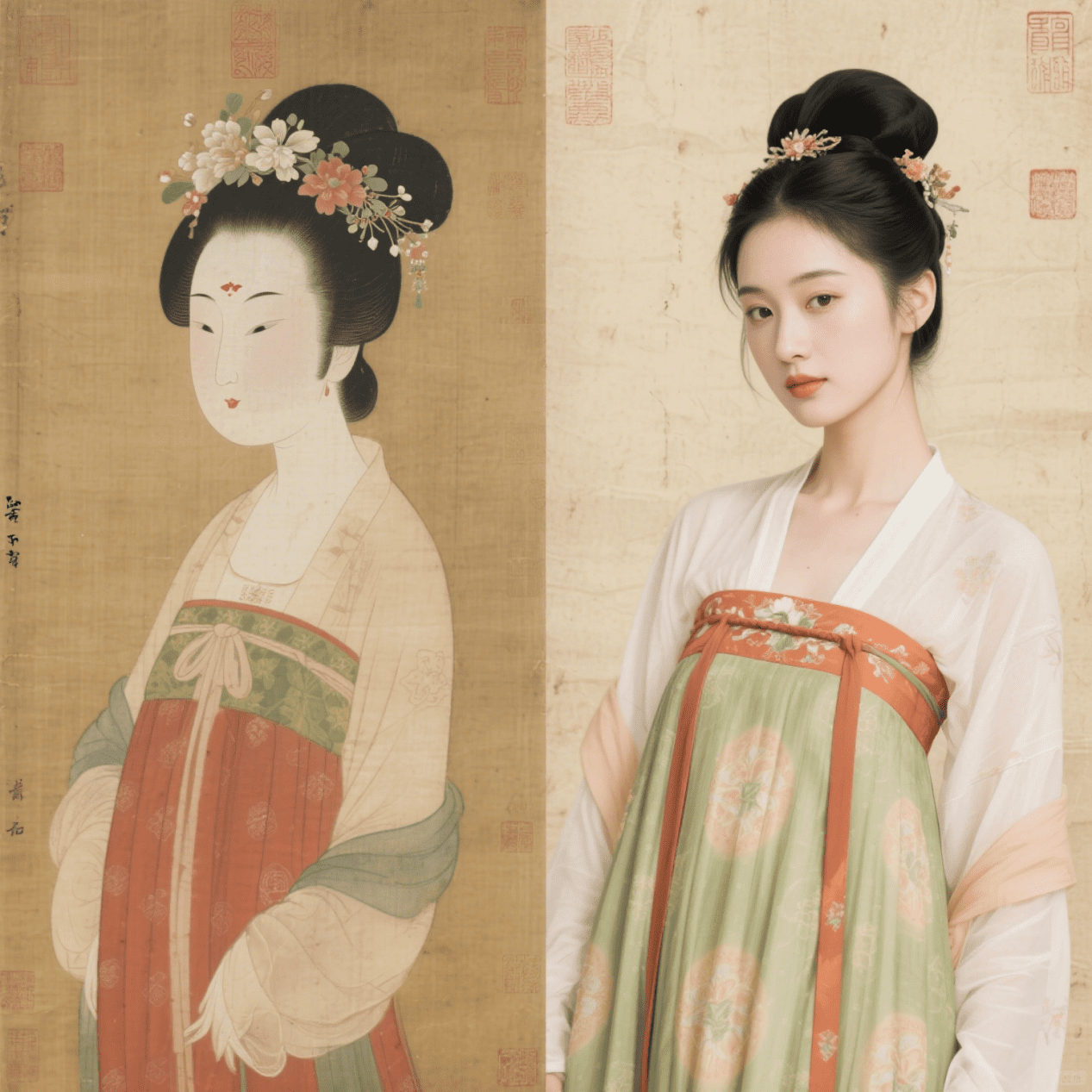How to Choose Hanfu According to Your Body Shape?

Hanfu, the traditional clothing of the Han Chinese, has seen a revival in recent years, captivating fashion enthusiasts worldwide with its elegance and historical significance. However, for those new to Hanfu, selecting the right style can be overwhelming—especially when considering body shape. Unlike modern Western fashion, Hanfu emphasizes flowing silhouettes and balanced proportions, making it flattering for all figures when chosen correctly.
In this guide, we’ll explore how to pick the most flattering Hanfu styles based on your body type, ensuring you look graceful and authentic while embracing this beautiful tradition.
1. Understanding Hanfu Silhouettes
Before diving into body-specific recommendations, let’s briefly examine the key Hanfu styles:
Ruqun (襦裙) – A top (ru) paired with a wrap skirt (qun), suitable for most body types.
Aoqun (袄裙) – A thicker, lined jacket (ao) with a skirt, often worn in winter.
Beizi (褙子) – A long outer robe worn over a skirt or pants, offering a slimming effect.
Shenyi (深衣) – A one-piece robe that wraps diagonally, creating an elongated look.
Tangzhuang (唐装) – Inspired by Tang Dynasty fashion, featuring high waists and wide sleeves.
Ming-style Hanfu (明制汉服) – Known for its structured jackets (ao) and pleated skirts (mamianqun).
Each style has unique characteristics that can enhance or soften certain body features.
2. Choosing Hanfu for Different Body Shapes
A. Pear Shape (Wider Hips, Narrower Shoulders)
Goal: Balance proportions by adding volume to the upper body while keeping the lower half streamlined.
Recommended Styles:
Beizi + Skirt (褙子+裙) – The long outer robe draws attention vertically, while a slightly A-line skirt softens the hips.
High-Waisted Ruqun (高腰襦裙) – The high waistline emphasizes the smallest part of the torso, while the flowing skirt drapes gracefully.
Ming-style Ao + Mamianqun (明制袄+马面裙) – The structured jacket adds shoulder presence, while the pleated mamian skirt balances the hips.
Avoid: Tight-fitting skirts or overly voluminous lower hems that exaggerate hip width.

B.Apple Shape (Wider Midsection, Slimmer Legs)
Goal: Create a defined waist and elongate the torso.
Recommended Styles:
Shenyi (深衣) – The diagonal wrapping naturally cinches the waist while the long robe elongates the silhouette.
Cross-Collar Ruqun (交领襦裙) – The deep V-neckline draws attention upward, while the skirt flows away from the midsection.
Tang-style High-Waisted Hanfu (唐制高腰汉服) – The empire waistline sits above the natural waist, creating a flattering drape.
Avoid: Wide belts or stiff fabrics that add bulk around the waist.
C.Hourglass Shape (Balanced Bust & Hips, Defined Waist)
Goal: Highlight natural curves without overwhelming the figure.
Recommended Styles:
Qixiong Ruqun (齐胸襦裙) – The high waistline emphasizes curves while the wide sleeves add drama.
Ming-style Aoqun (明制袄裙) – The fitted jacket and full skirt complement an hourglass shape beautifully.
Beizi with Belt (褙子+腰带) – A lightly tied belt enhances the waist without constricting.
Avoid: Baggy or boxy styles that hide natural proportions.
D.Rectangle Shape (Straight Shoulders & Hips, Minimal Waist Definition)
Goal: Create the illusion of curves and add dimension.
Recommended Styles:
Mamianqun (马面裙) with Detailed Jacket – The pleated skirt adds movement, while embroidery or layered tops create shape.
Layered Hanfu (叠穿汉服) – Multiple lightweight layers (e.g., a daxiushan over a ruqun) add volume.
Shenyi with a Waist Tie (深衣+腰带) – A sash can be tied to softly define the waist.
Avoid: Overly stiff or straight-cut robes that don’t add dimension.

E.Inverted Triangle (Broad Shoulders, Narrow Hips)
Goal: Soften the shoulders and add volume to the lower body.
Recommended Styles:
Wide-Sleeved Ruqun (大袖襦裙) – The sleeves balance the shoulders, while a full skirt adds lower-body volume.
Aoqun with Flared Skirt (袄裙+散摆裙) – The structured top is balanced by a flowing skirt.
Song-style Hanfu (宋制汉服) – Lighter fabrics and softer lines create a harmonious look.
Avoid: Puffed sleeves or heavy shoulder embellishments that widen the upper body further.
3.Additional Tips for a Flattering Hanfu Look
A.Fabric Choices Matter
Lightweight fabrics (silk, chiffon) – Drape beautifully and suit most body types.
Structured fabrics (brocade, linen) – Better for creating shape in straighter figures.
Avoid overly stiff materials if you want a softer silhouette.
B.Color & Patterns
Vertical stripes or gradient dyes – Elongate the body.
Dark tops + light skirts – Balance a pear shape.
Embroidery & prints – Draw attention to desired areas (e.g., waist, neckline).
C.Accessorizing
Belts & sashes – Define the waist subtly.
Long necklaces – Elongate the torso.
Hair ornaments – Bring focus upward for apple shapes.

4.Final Thoughts: Embrace Your Unique Beauty in Hanfu
Hanfu is not about conforming to a single standard of beauty—it’s about celebrating individuality through timeless fashion. Whether you have a curvy, straight, or athletic build, there’s a Hanfu style that will enhance your natural elegance.
By understanding your body shape and selecting the right cut, fabric, and accessories, you can wear Hanfu with confidence and grace. The key is to experiment, have fun, and appreciate how this ancient fashion adapts beautifully to modern wearers.





Responses